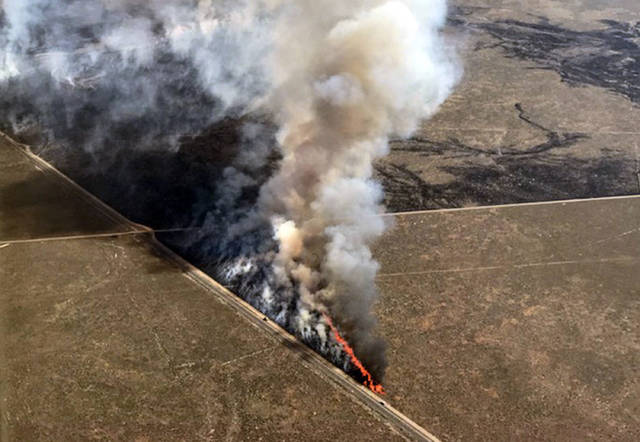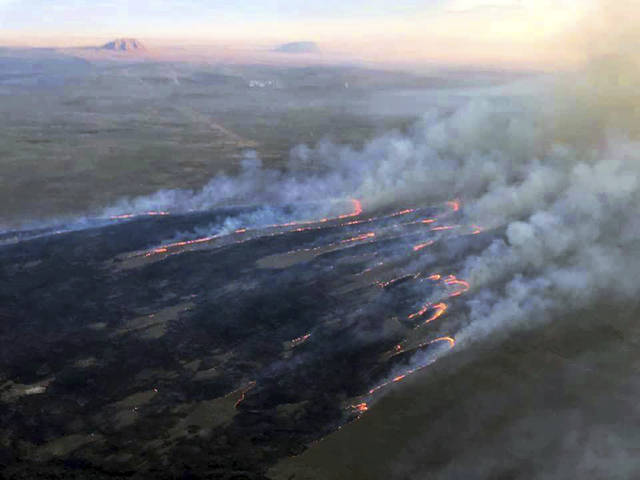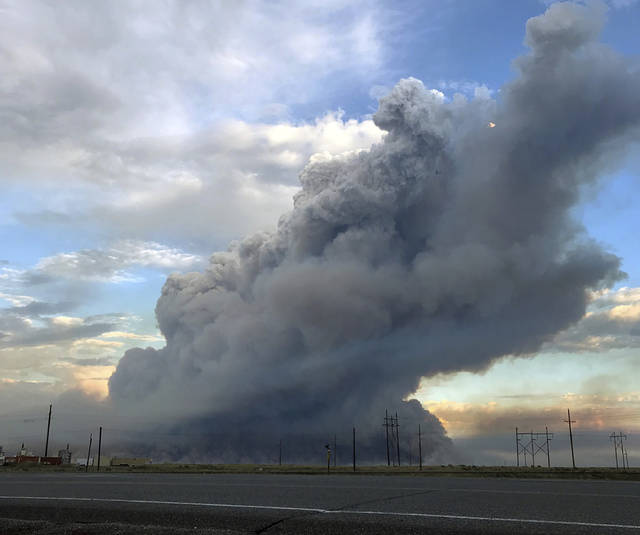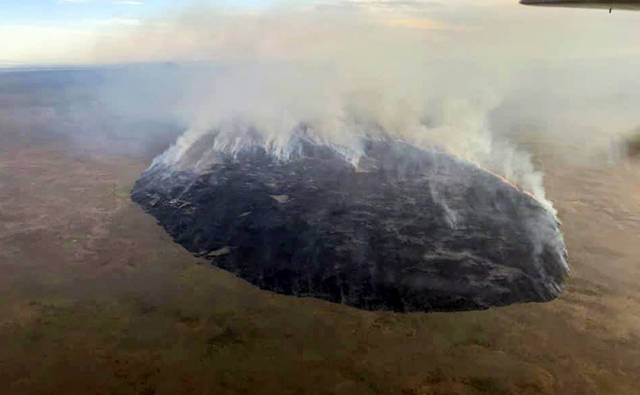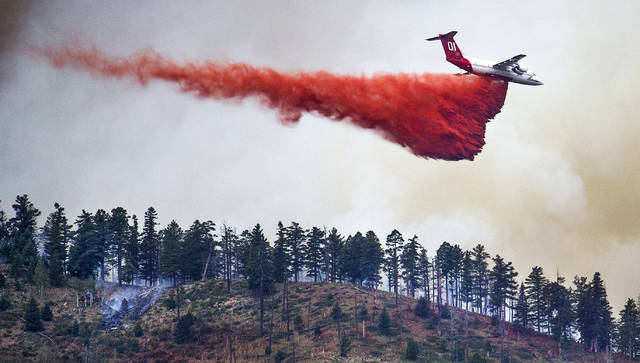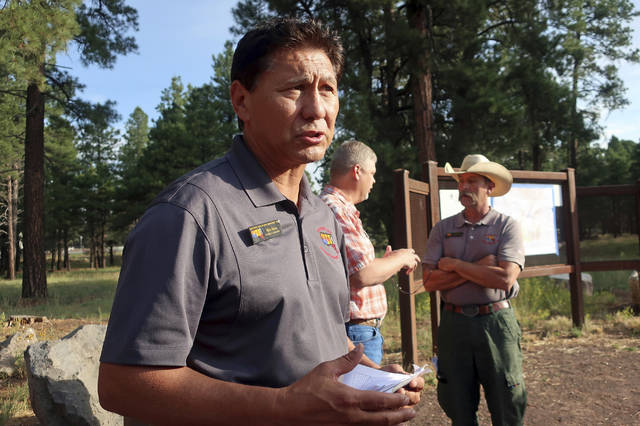Fire close to nuke facilities in Idaho shifts away in wind
BOISE, Idaho — The largest wildfire at the nation’s primary nuclear research facility in recent history had been burning close to buildings containing nuclear fuel and other radioactive material but a change in wind direction Wednesday was pushing the flames into open range at the sprawling site in Idaho, officials said.
The lightning-caused fire at the Idaho National Laboratory is one of several across the U.S. West.
Before the wind shifted, the Idaho blaze got close to several lab facilities, including one where high-level radioactive materials are studied and another holding a nuclear reactor, spokeswoman Kerry Martin said. She said she didn’t know how close the flames got to those buildings.
The lab has several safety measures for wildfires that often ignite in southeastern Idaho’s desert rangeland, including clearing ground around each building and having several specially trained fire crews stationed around the site that’s nearly the size of Rhode Island.
“It’s not our first rodeo,” Martin said. “We have fire stations, a lot of fire equipment, we have trained firefighters and equipment to cut barriers.”
The wildfire that ignited Monday is estimated to have burned about 172 square miles. Non-essential laboratory employees have been evacuated.
The nuclear research site includes reactors and research materials, as well as facilities for processing high-level nuclear waste and other radioactive waste.
Wildfires are not uncommon on the sprawling nuclear sites scattered across the arid West. A blaze burned more than 62 square miles last weekend near the Hanford Nuclear Reservation in Washington state, where most of the plutonium for the nation’s nuclear weapons was created. That fire didn’t threaten any buildings.
Timothy Judson, director of the Nuclear Information and Resource Service watchdog group in Takoma Park, Maryland, said there were concerns that fires near nuclear sites in California and Colorado could release radioactive material.
Meanwhile, rain in a forested Arizona city helped firefighters battle a wildfire that has raged for days in a scenic mountain pass but was raising the risk of flooding, officials said.
Up to 1 inch of rain allowed crews to directly attack the fire, extinguish flames and build containment lines in an area where nearly 3 square miles have burned since Sunday, said fire management team spokesman Steve Kliest.
Forecasters warned of possible flooding in Flagstaff neighborhoods with aging drainage systems below the fire. Thunderstorms Wednesday and Thursday were expected to drench fire-scarred areas of the Coconino National Forest surrounding the city, a popular mountain getaway in the largest ponderosa pine forest in the U.S.
The area had not received any significant moisture in weeks and had no previous wildfires on record. It is dense forest with lots of pine needles and grass that will burn more intensely, creating a hard clay surface that quickly sheds water.
A team that will analyze the soil and look at ways to stabilize it was expected to arrive this week.
“It’s not an easy task, but we’re going to give it our best shot,” Coconino National Forest supervisor Laura Jo West said at a community meeting Tuesday. “I can’t guarantee results.”
Residents ordered to evacuate more than two dozen homes this week were being allowed to return.
Ladd Vagen, his wife and two daughters were staying at a hotel. He said he’s curious to scope out the landscape when they go home Wednesday but believes the community “is in just fine shape.”
Still, the family will be on notice they may have to flee again.
“I don’t think we’re going to unload our cars,” Vagen said. “We may unload minimally and do a better job of organizing what we’re going to take if we go back to ‘go’ status.”
Arizona has declared an emergency, freeing up funding to battle the blaze. The firefighting cost to date is $2.1 million, incident commander Rich Nieto said.
Remove the ads from your TribLIVE reading experience but still support the journalists who create the content with TribLIVE Ad-Free.

